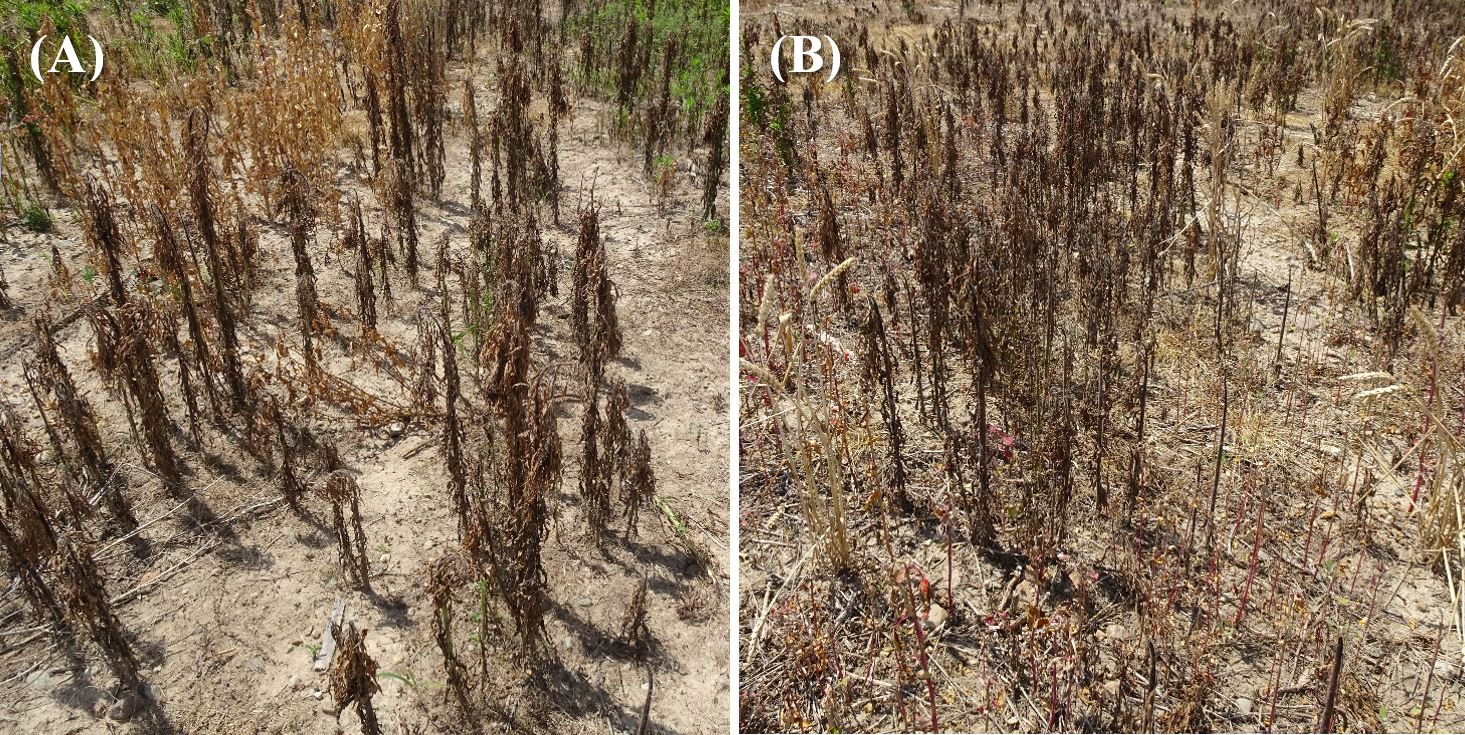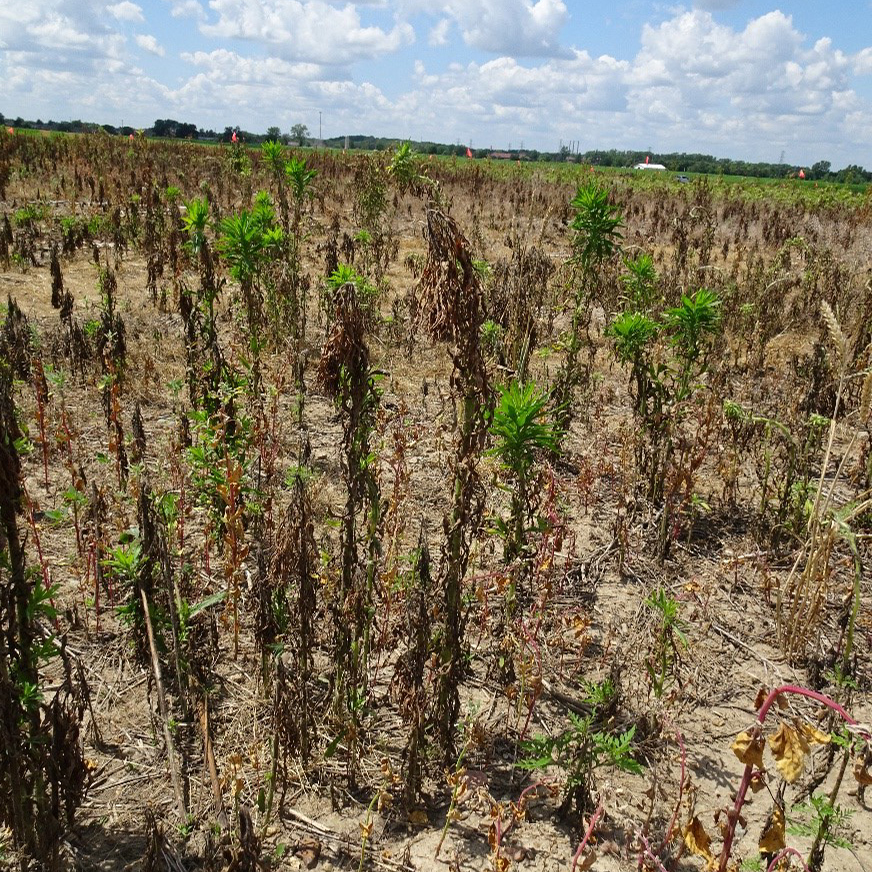Source: Christy Sprague, Michigan State University
The challenging conditions this spring have left many fields unplanted. Glyphosate- and multiple-resistant horseweed (marestail) dominates a majority of these fields. Horseweed and other weeds in these unplanted fields need to be controlled prior to setting seed to prevent future weed problems. To help determine some of the more effective options for horseweed control, we sprayed several treatments two weeks ago on 2 feet tall horseweed. Common lambsquarters, common ragweed and prickly lettuce were also present in this field. Below is a compilation of pictures of these treatments and a summary of the results.
Horseweed control results
Roundup PowerMax (glyphosate) alone was ineffective at controlling a majority of the horseweed plants in this field (Figure 1A), indicating this population is highly resistant to glyphosate. Glyphosate-resistant horseweed is extremely common in many Michigan fields and glyphosate alone should not be used. The addition of 2,4-D ester at 1 pint per acre (pt/A) or 1 quart per acre (qt/A), Enlist One at 1 pt/A or Clarity (dicamba) at 1 pt/A to Roundup PowerMax improved horseweed control. However, controlling horseweed with these treatments only ranged from 60–70% 14 days after treatment (Figure 1B). These treatments will not likely result in complete control of horseweed.
The addition of 2,4-D or dicamba also improved common lambsquarters and common ragweed control over Roundup PowerMax alone. While these may be some of the more inexpensive treatments, they were not the most effective and caution should be taken if 2,4-D ester or any of the dicamba formulations are used. Off-target movement by drift or volatility, especially under high temperature conditions and when sensitive crops are in the area, can occur these herbicides.

The most effective treatments to control glyphosate-resistant horseweed were Liberty (glufosinate) at 32 fluid ounces per acre (fl oz/A) plus AMS (Figure 2A), or Sharpen at 1 fl oz/A or 2 fl oz/A plus Roundup PowerMax at 32 fl oz/A plus MSO plus AMS (Figure 2B). These treatments resulted in greater than 95% control of horseweed, common lambsquarters, common ragweed and prickly lettuce. A higher rate of Liberty (glufosinate) at 43 fl oz/A can also be used.
Initial control of glyphosate-resistant horseweed with Gramoxone 3L (new formulation) at 2.67 pt/A plus surfactant was 80%. However, by 14 days after treatment, horseweed started to regrow (Figure 3). Controlling common lambsquarters, common ragweed and prickly lettuce ranged from 70–75%.

Two additional treatments we examined included disking and mowing. Mowing reduced overall weed biomass, however it also removed the primary growing point and as horseweed started to regrow, additional shoots were produced. If mowing, multiple passes throughout the season will likely be required. A onetime mowing would likely be more beneficial later in the season prior to flowering and seed set. Tillage or disking did provide good horseweed control, however it will likely take multiple passes to keep the fields clean throughout the season.
Additional considerations
All these treatments were applied under good growing conditions (plenty of moisture and heat) and resulted in good herbicide activity. As weeds continue to grow and begin to flower, the effectiveness of these treatments will likely be reduced. Additionally, depending on the weed species, there could possibly be new emergence later in the season.
Crop rotation restrictions also need to be considered when choosing one of these herbicide treatments for horseweed and other weed control. Sharpen, 2,4-D and dicamba all have residual activity and could cause injury to certain cover crops and winter wheat if rotation restrictions are not followed. Winter wheat should not be planted earlier than one month after applying dicamba or 2,4-D (Enlist One). Sharpen at 1 or 2 fl oz/A can be applied any time before planting winter wheat. There is a 70-day rotation restriction between Liberty applications and planting winter wheat. Consult individual herbicide labels.

